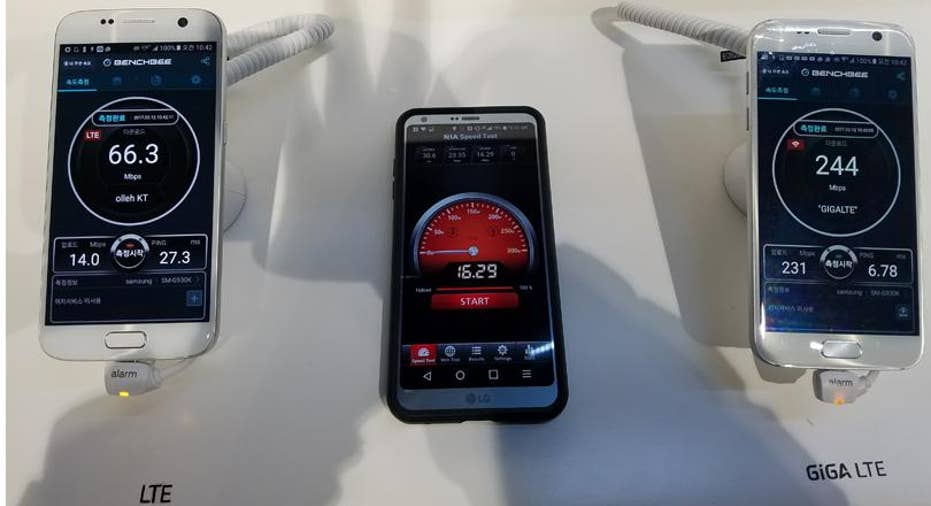Want to Triple LTE Speeds? Just Add Wi-Fi

Sprint, T-Mobile, and Verizon are all working to bring gigabit LTE to the US later this year, which would boost wireless speeds faster than most people's home connections. In Korea a few weeks ago, I got to see what that's really like.
There are two ways to pull off gigabit LTE right now. One is to use a massive amount of LTE spectrum, which Sprint plans to do and Telstra is doing now in Australia. PCMag Australia got hands on with that in January, while Cellular Insights has an amazingly technical hands on, too.
But AT&T, T-Mobile, and Verizon will combine their LTE spectrum with Wi-Fi airwaves, in a practice known as LTE-U. That's similar to what KT is doing with Giga LTE, which I got to test at KT Square in downtown Seoul.
Using custom firmware, KT opens a single network socket with two data "subflows," one on LTE and one on Wi-Fi. The subflows get joined by a "multi-net aggregation gateway" in KT's core network and then appear to be one request to the outside internet. The system even works when roaming internationally, according to a KT presentation.
Our carriers' approach isn't exactly the same as KT's, which combines Wi-Fi with LTE. Our carriers will be sending LTE encoding over Wi-Fi airwaves, which is actually a simpler network structure. But the effect for consumers should be similar.
Seamless Connection, Limited Coverage
The key element of Giga LTE is that it's a seamless connection. KT monthly subscribers get free access to KT's Wi-Fi hotspot network, and special firmware in KT's phones merges the Wi-Fi and cellular connections. The hotspot has to be a KT hotspot; it can't just combine any Wi-Fi link.
This is really important, because it means that unlocked, non-Korean phones can't get Giga LTE. Neither can people on rental SIMs, like I was on in Korea. I anticipate the same thing will happen in the US—to get the best speeds from T-Mobile or Verizon, you'll need to use a T-Mobile- or Verizon-branded phone.
The high-speed coverage also focuses on businesses, community centers, and stores, so it's not as common in less commercial areas. Verizon and T-Mobile are likely to build out their LTE-U networks focusing on the most congested cities first, as this is a capacity-enhancing technology, not really a coverage-increasing technology.
So how about those speeds? Korean LTE speeds are already pretty great; I usually got speeds from 30-60Mbps in much of Seoul. But Giga LTE really boosts things. Download speeds went from 66Mbps to 244Mbps, and upload speeds went from 14Mbps to an amazing 231Mbps. (The image above shows, at left, a KT-branded phone on LTE only; in the center, a US phone on KT prepaid LTE; and at right, a phone on KT Giga LTE.)
What do you even do with those speeds? In the US, we're unlikely to be able to use them as a home internet connection, because the carriers limit tethering to PCs and TVs. Rather, this is a capacity play. Remember when the first iPhones dragged the AT&T network down to a crawl? Adding Wi-Fi airwaves to the LTE network in crowded cities is designed to prevent that from happening.
The upcoming Galaxy S8, being announced March 29, may be the first LTE-U capable phone in the US. We're looking forward to hearing more then.
This article originally appeared on PCMag.com.



















